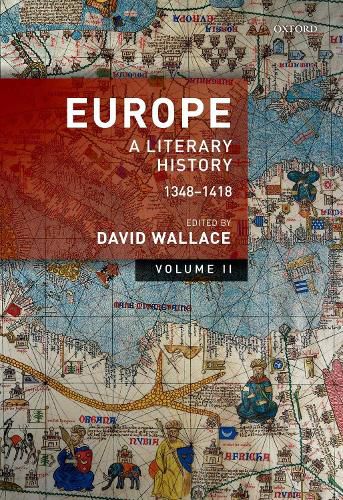Readings Newsletter
Become a Readings Member to make your shopping experience even easier.
Sign in or sign up for free!
You’re not far away from qualifying for FREE standard shipping within Australia
You’ve qualified for FREE standard shipping within Australia
The cart is loading…






This, so far as we know, is the first full-scale literary history of Europe. The period covered, 1348-1418, provides deep context for understanding current developments in Europe, particularly as initiated by the destruction of World War II. Our two volumes unfold through ten sequences of places linked by trade, travel, geography, pilgrimage, alliance, and artistic exchange. They were also linked by the spread of disease, and so we begin with the greatest of all European catastrophes: the 1348 bubonic plague, which killed one person in three. Literary cultures helped speed recovery from this unprecedented ‘ground zero’ experience, providing solace, distraction, and new ideals to live by. Over 82 chapters, and with generous illustrations, we show how Latin, Hebrew, Slavic, Armenian, and Arabic writings, along with a multitude of mother tongues, shared and articulated European space. Questions of where Europe begins and ends, then as now, prove problematic, but these volumes demonstrate in unprecedented detail what the free movement of European literature achieved through its variety, local peculiarity, and regenerative power.
$9.00 standard shipping within Australia
FREE standard shipping within Australia for orders over $100.00
Express & International shipping calculated at checkout
This, so far as we know, is the first full-scale literary history of Europe. The period covered, 1348-1418, provides deep context for understanding current developments in Europe, particularly as initiated by the destruction of World War II. Our two volumes unfold through ten sequences of places linked by trade, travel, geography, pilgrimage, alliance, and artistic exchange. They were also linked by the spread of disease, and so we begin with the greatest of all European catastrophes: the 1348 bubonic plague, which killed one person in three. Literary cultures helped speed recovery from this unprecedented ‘ground zero’ experience, providing solace, distraction, and new ideals to live by. Over 82 chapters, and with generous illustrations, we show how Latin, Hebrew, Slavic, Armenian, and Arabic writings, along with a multitude of mother tongues, shared and articulated European space. Questions of where Europe begins and ends, then as now, prove problematic, but these volumes demonstrate in unprecedented detail what the free movement of European literature achieved through its variety, local peculiarity, and regenerative power.